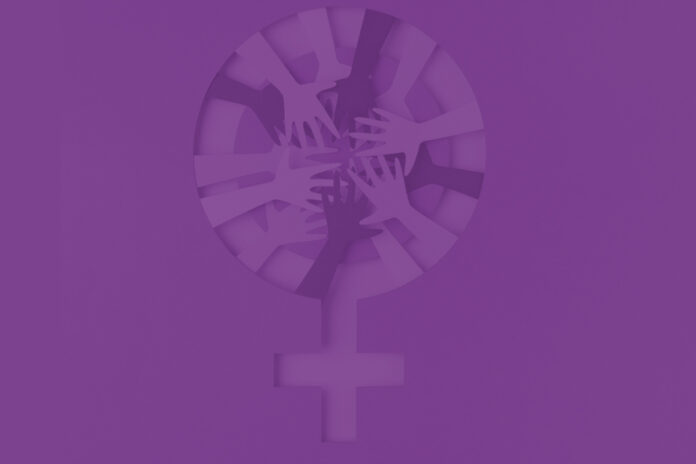Gender sensitivity can help root out negative attitudes about gender and sexuality, and help make way for more progressive values
Words by Mishti Verma

“We want- Azadi
Our daughters want- Azadi
From patriarchy- Azadi
From all hierarchy -Azadi
For breathing freely-Azadi
For moving freely -Azadi!”
The above lines are from the poem that had been written by well-known, celebrated feminist and poet Kamla Bhasin.
It talks about the freedom to express beyond the chains of patriarchal mental models. It is a poem about gender sensitisation!
The term gender sensitisation refers to raising awareness about gender equality concerns, discrimination, biases, and stereotypes, thereby enabling sensitivity, change, and behavioural modification. The practices of gender sensitisation aim to foster an equal, inclusive, and safe society. This can be implemented through various educational programmes at organisations and institutions and through self-education, workshops, art, theatre, and more.
Previously, gender sensitisation was practiced at organisations with the aim of understanding gender roles and increasing gender diversity at the workplace. Gender sensitisation forums helped in overcoming role stereotypes, unconscious biases, and building sensitivity towards paradoxical gender expectations. These sessions were specific to challenges faced by women employees.
Gender sensitisation also addressed models and approaches to resolve women leadership challenges, such as increasing career leaks in middle management positions and glass ceiling barriers for senior leadership roles.
The role of theatre and arts in gender sensitisation forums
Theatre serves as a powerful medium to present gender equality concerns. The pedagogy facilitates sensitive portrayals of gender stereotypes and unconscious biases.
In 2014-2015, we had facilitated multiple city tours for leading multinationals like Telenor, using forum theatre to address gender sensitisation. During that time, we had also launched the first of its kind forum on gender sensitisation with NHRD, Tie- Stree Shakti, and theatre veterans like Tom Alter. These forums helped participants connect and identify deeply with gender-based themes and dramatised situations that were presented as a slice of life.
At some forums, we also used the methodology of poetry jamming, helping participants bring out their inner feelings and life experiences.
Theatre and arts enable outcomes such as:
- Theatre helps participants engage effectively, and they are motivated to act towards change
- Participants/audiences can strongly identify with dramatised themes and build fresh mind maps
- Participants/audiences can recognise and bring out their inner feelings
- Builds empathy and sensitivity towards gender-based themes and concerns
- Holds a mirror to moral drivers, personal attitudes and beliefs. It helps look at the realities we know through a corrective reframe
The changing lens of Gender
Over the years, the understanding of gender sensitisation has evolved. It is not just limited to women specific themes or gender roles as per social construct. Gender sensitisation now also focuses on LGBTQ+ inclusion in the workplace. It incorporates practices to help employees from the LGBTQ+ community feel safe, respected, and included.
The practices include allyship, intersectionality, ESGS, gender pronouns sensitisation, psychological safety models, among others. The aim is to cultivate cultures that promote not just diversity in gender, but inclusion, equity, and a strong sense of belonging.
There are many ways where arts & theatre can be integrated in facilitating high impact gender sensitisation campaigns. Some of these methods include:
- Art exhibitions on gender-based themes, including Pride Campaigns
- Music and poetry jamming for breaking barriers and striking an emotional chord
- Forum and interactive theatre, where actors enact gender-based themes that audiences can strongly resonate with and facilitators create safe spaces & learning experiences for healthy debate, deeper reflections, and building fresh perspectives
- Sociodrama and psychodrama- Through action-based methods and role playing, role reversals one can enhance empathy and see situations from the other person’s perspective, gain deeper self-awareness and insights. This is done in a safe, supported environment, using principles of psychodrama (a powerful experiential therapy method developed by Jacob Moreno, a 20th century psychiatrist)
- Short films: The magic of the reel and short movies or audio-visual campaigns can be a powerful medium for invoking emotions and motivating change. This medium can also reach a wider audience
Gender sensitisation is imperative to build a culture where individuals feel safe enough to bring their ‘whole selves’ to work or different life spaces. When we can be truly authentic, we can perform our best. The starting point however is the shift in mindset, it is about checking our own biases, using gender-neutral lenses, and most importantly removing the ‘darr’ from gender!
Mishti Verma is a seasoned facilitator, Arts based Therapist, Gallup coach with strong experience in leadership development and diversity, equity, & inclusion. As a dynamic entrepreneur, she has founded organizations like Inner Katha Interventions and CLAP.
She has close to two decades of experience in learning & development, counselling, facilitation, & coaching. She has partnered with over 50 organisations, and developed unique experiential learning methods using applied psychology, sociometry, theatre and applied psychodrama. Additionally, she has trained and coached over 15000 participants and over 7000 women leaders at various forums and organisations.


